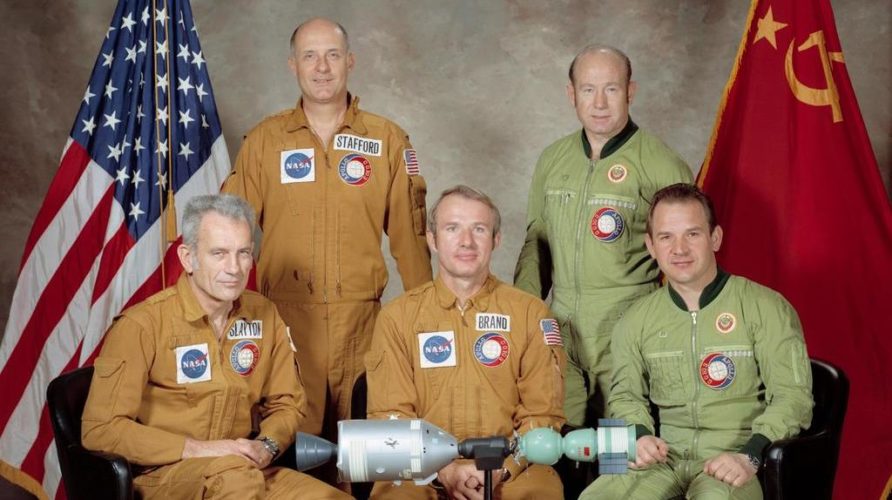The Space Race is one of mankind’s seminal achievements; to launch humans into the vacuum of space, to slip the surly bonds of Earth as Ronald Reagan once so eloquently eulogized for the victims of the Challenger disaster… space travel is a dangerous gambit. Some of the earliest manned space launches conducted by the National Aeronautics and Space Administration (NASA) were so risky, astronauts flying the missions were thought to have a 50/50 chance of making back from space alive. Yet through it all, brave souls took the risk in the name of scientific progress and patriotic duty at the height of the Cold War to travel beyond our atmosphere towards the heavens, opening a new frontier in human exploration hitherto thought impossible by our ancestors.
One cannot understate the importance of NASA and its contributions to our daily lives; much of the technologies developed during the Space Race would find their way into American homes after the fact. Looking back on those early space pioneers, the very first astronauts selected to fly single-seat rockets into the sky reads like a who’s who of legendary spacemen: Alan Shepard, Virgil I. “Gus” Grissom, John Glenn, Wally Schirra, Scott Carpenter, Leroy G. “Gordo” Cooper. Yet of the original Mercury Seven astronauts selected out of hundreds of test pilot candidates, one stands out uniquely among the rest: Donald K. “Deke” Slayton. Some may recognize the name from popular space-themed films and series of the 1990s like Apollo 13 and From the Earth to the Moon, but the true story behind Slayton’s career at NASA is truly remarkable. Above all, his time with the space program demonstrates that perseverance in the face of adversity is a definite attribute to strive for in life.
The Mercury Seven: America’s Best of the Best
For those unfamiliar with spaceflight, suffice to say that the criteria for selection to the space program even in the 1950s and ‘60s was challenging. Following the beginning of the Space Race in 1957 with the Soviet Union’s launch of the Sputnik satellite, the U.S. government began an extensive campaign to begin preparing America for its entry into outer space. Candidates to the astronaut program had to be under 40 years of age and in excellent physical condition; they also had to hold a college degree and be a certified jet pilot with more than 1,500 flying hours under their belt. Uniquely, astronaut candidates for the Mercury program had to be under 5’11” tall, as the original capsules flying atop the Redstone rockets could not accommodate larger individuals.
Slayton, a 1949 graduate from the University of Minnesota, was chosen as one of the Mercury Seven pilots along with Carpenter, Cooper, Glenn, Grissom, Schirra and Shepard in 1959. He was originally slated to fly the fourth manned mission of the Mercury program – the second orbital flight following Shepard and Grissom’s suborbital flights and Glenn’s first orbital flight. Several months before his scheduled flight in 1962 however, Deke Slayton was diagnosed with an atrial fibrillation, an arrhythmia or irregular heart rhythm. Owing to this new medical diagnosis, the flight surgeon at NASA grounded Slayton from flying in the next Mercury mission, ending his participation in the program and effectively ending his chance at going into space.
The Road to Apollo-Soyuz: Never Giving Up
The news that your dream of going to space is over would have devastated anyone, but Slayton to his credit stuck with the program. He became the assistant director of Flight Crew Operations in 1963 with NASA which gave him discretionary power over selecting astronauts for the space program, notably Group 2 astronauts including Neil Armstrong, Jim Lovell, John Young and Pete Conrad. He was serving nearby the testing site during the infamous Apollo 1 disaster that killed astronauts Gus Grissom, Ed White and Roger Chaffee. Afterward, he was instrumental in selecting the astronauts that would go on to form the core of the Apollo space program, the manned missions to the Moon between 1968 and 1972.
Despite his work for the administration, Slayton continued to yearn to travel to space, and who wouldn’t? With the Apollo program winding down in 1972 and manned space missions looking to be cut back due to budgetary reasons during the 1970s, Slayton worked diligently to give himself one final opportunity to travel into space. He had began traveling to different physicians as early as 1963 in an effort to cure his arrythmia problem, and had begun living a healthier lifestyle in an effort to improve his odds of success in beating the issue. He gave up coffee and tobacco, began working out regularly, and tried different medications that gave some promise. Finally, after almost a decade of effort, NASA restored Slayton to flight status in 1972.
The timing could not have been better for Slayton; thanks to a thaw in relations between the United States and the Soviet Union after the American victory in the Space Race, an upcoming joint-manned mission called the Apollo-Soyuz Test Project was being discussed. Soyuz, the Soviet equivalent to NASA’s Apollo capsules, had not landed on the Moon, but the Soviet cosmonaut program held a long and distinguished line of veteran space explorers. Designed to mark the conclusion of the Space Race amid a period of increasing cooperation between the two superpowers, Slayton was cleared to serve as the docking module pilot for the flight, a highly important role for the newcomer to space. The mission launched on July 15, 1975 to international fanfare as the first time two nations worked together cooperatively in space.
Apollo-Soyuz marked the end of an era in many respects; it was the final manned space mission NASA would launch until the rollout of the Space Shuttle in 1981, and it marked the seventh and final debut of a Mercury Seven astronaut in space. It would also be the penultimate flight for a Mercury astronaut, the last coming in 1998 when John Glenn returned to space aboard the Space Shuttle Discovery. For Deke Slayton, it marked the culmination of years of dedication and hard work, first to even qualify for the astronaut program, then to re-earn his flight status after it had been taken from him due to medical reasons.
At any point along the road, he could have hung it up and left for a lucrative career in the private sector like many of his fellow astronauts did following their retirement. Instead, he persevered through mental and physical adversity to achieve his dream and travel to space. In doing so, Slayton sets an example for all of us to follow: sometimes, we must take the difficult road in life if we want to achieve something great. Even if we are met with defeat along the way, the only way to achieve success is to never give up until the fight is finished. Even if he had failed, it spoke to his character that he continued trying to get cleared all throughout the program’s missions in the 1960s and ‘70s. That he got cleared and made it into space proves not only his mental fortitude, but a certain strength of character that we can all emulate; that, more than anything else, defines what it means to live a life Well-Sewn.



